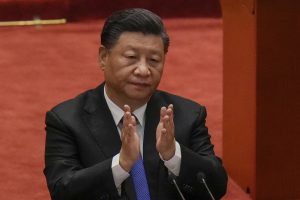A potential Chinese invasion of Taiwan has received exhaustive coverage in recent months. In Japan, too, there has been considerable discourse about cooperating with the United States to maintain peace and stability across the Taiwan Strait. In fact, at the U.S.-Japan summit in April 2021, the phrase “peace and stability across the Taiwan Strait” was included in the U.S.-Japan Joint Leaders’ Statement for the first time since the late 1960s. That marks a major change. Now, some observers within Japan are calling for simulations to see what preparations might be possible for the “Liberation of Taiwan.”
What is driving all this? Certainly, the Chinese military has stepped up its activities around the Taiwan Strait during the COVID-19 pandemic. Chinese military aircraft are violating the median line in the Taiwan Strait and are increasingly present around Taiwan and the Dongsha Islands in the South China Sea. Moreover, China is rapidly acquiring the equipment it would need for an invasion; for instance, it is preparing to commission landing craft to attack the east side of the Central Mountain Range, which has been a problem. The Taiwan Ministry of National Defense likely interprets the building of these landing craft as a sign that China will soon possess the ability to invade.
Given all this, it is easy to get the impression that an invasion of Taiwan is not far off. In Japan, some believe that China will launch an invasion of Taiwan during President Xi Jinping’s approaching third term (2022-2027).
Yet in parallel with these military developments, China has toned down its rhetoric. In January 2019, Xi Jinping opened the year with a speech where he expressed a desire for the liberation of Taiwan and explicitly stated that the use of force was not off the table. The plan he suggested then is known as Xi’s five-point proposal. Yet, already at that point, he identified the “younger generation and the grassroots frontline” as targets of the proposal. As suggested by the “31 Measures” to attract Taiwanese citizens and companies to work in China in February 2018 and Beijing’s New 26 Measures for Cross-Strait Exchanges in November 2019, this is a policy of fostering people wanting unification with China within Taiwanese societies and Taiwanese companies.
Yet what was primarily reported on that occasion was the question of the possible use of force. In fact, Xi’s mention of the use of force caused Tsai Ing-wen’s approval rating, which had already gone down considerably, to rise again in Taiwan.
There has been talk about realizing policies of “peaceful reunification” and “one country, two systems” at the Chinese Communist Party (CCP) Working Conference on Taiwan Affairs on January 19, 2020 and elsewhere. Likewise, the “unification” of Taiwan was reaffirmed as a policy goal at the fifth plenary session of the 19th Central Committee of the Communist Party of CCP in October 2020, while also suggesting a “fusion development” strategy for China’s Fujian Province and Taiwan. All of these, while building on Xi’s five-point proposal, seem to be emphasizing permeation of Taiwanese society rather than forceful unification. Moreover, the object of China’s united front work changed to “strengthening Taiwan’s patriotic reunification force” in the “regulations on the united front work of CCP” of the Chinese Communist Party on January 5, 2021. The goal became for China to call for strengthening Taiwan’s patriotic reunification force within Taiwan, rather than unification through the Chinese Nationalist Party of Taiwan. Then, at the 2021 Working Conference on Taiwan Affairs in January 2021, [Member of the Politburo Standing Committee and Chairman of the Chinese People’s Political Consultative Conference] Wang Yang emphasized initiatives targeting companies and individuals in Taiwan and the fusion of Fujian Province and Taiwan.
In Xi Jinping’s speech at the commemorative ceremony of 100th anniversary of Chinese Communist Party on July 1, 2021, he again mentioned unification with Taiwan. Yet this time he did not speak of the use of force but connected the “One China” Policy and the 1992 Consensus with an “and.” The 1992 Consensus is included in One China and was previously not connected with an “and.” Likewise, Xi’s speech at a Meeting Marking the 110th Anniversary of the Revolution of 1911 on October 9 in 2021 used similar wording and especially stressed peaceful reunification. Further, Xi Jinping’s speech to the United Nations General Assembly the same month made no mention of Taiwan despite it being China’s 50th Anniversary of the Restoration of the Lawful Seat.
China itself aims to achieve unification by 2049. Beijing’s plan is for all “Chinese children,” including the people of Taiwan, to celebrate unification at that time. We can argue that this is just rhetoric, and hardly portends military action, but it could suggest efforts for the time being to strengthen the “patriotic reunification force” within Taiwanese companies and broader society. Of course, that will be no easy task. Sentiment towards China within Taiwanese society has in fact been deteriorating considerably.
Still, China will likely try to permeate Taiwanese society with this kind of hybrid approach. Military activity is clearly gathering pace, but the idea scenario for China is more likely to be to simply display its military superiority while getting Taiwanese society on board with the idea of unification.
































